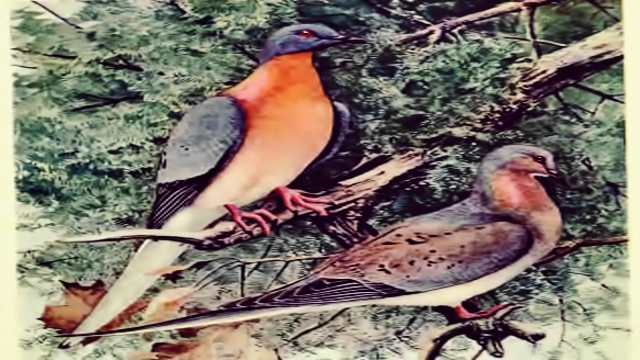The extinction of any species is a somber event, often marked by a combination of human negligence and environmental factors. Among the many species that have vanished from our planet, the story of the Passenger Pigeon stands out as one of the most tragic and avoidable.
Once numbering in the billions, these birds were driven to extinction by a combination of overhunting, habitat destruction, and a fundamental misunderstanding of their social behavior. This article explores the rise and fall of the Passenger Pigeon, a cautionary tale that resonates even today.

Population Like No Other
At its peak, the Passenger Pigeon population is estimated to have been between three and five billion individuals. To put that into perspective, a billion is an incomprehensibly large number. For instance, a billion seconds is nearly 32 years, and a billion minutes is almost two thousand years. The sheer scale of the Passenger Pigeon population was staggering; flocks were reported to be a mile wide and three hundred miles long, darkening the sky as they flew overhead. Renowned naturalist John James Audubon described these massive flocks as so numerous that they could blot out the sun.
Given their abundance, it seemed logical to many that the Passenger Pigeon could be harvested as a food source without consequence. However, this assumption would prove to be tragically misguided.
Harvesting of Passenger Pigeons
In the 19th century, Passenger Pigeons became a popular food source, particularly among the lower classes. They were cheap and plentiful, with prices dropping to as low as twenty-five cents for a dozen. The demand for these birds led to rampant overhunting. Reports indicate that at one point, 50,000 birds were shipped daily to markets in New York City. The methods used to capture them were often brutal and unsustainable.

Neltje Blanchan, in her book “Birds That Hunt and Are Hunted,” noted that over one million pigeons could be sent to market from a single roost in a single year. The sheer volume of birds being harvested was staggering, and the impact on their population was devastating.
Social Structure of Passenger Pigeons
Passenger Pigeons were highly social creatures, relying on their large flocks for survival. This gregarious nature was a defense mechanism; by flying in large numbers, they could confuse predators and increase their chances of survival. However, as hunting decimated their numbers, the social structure that was essential for their breeding and survival began to collapse.

The loss of these large flocks disrupted their breeding patterns, leading to a decline in population that could not be reversed. Despite warnings from early conservationists, the message fell on deaf ears. Many believed that the Passenger Pigeon was too numerous to be affected by human activity. A report from the Senate of Ohio in 1857 stated, “The passenger pigeon needs no protection. Wonderfully prolific, having the vast forests of the North as its breeding grounds, travelling hundreds of miles in search of food, it is here to-day and elsewhere to-morrow.” This complacency would prove fatal.
Decline and Extinction
By the late 19th century, the Passenger Pigeon population had begun to dwindle alarmingly. In 1878, a flock of about fifty million birds attempted to nest in Wisconsin, but hunters quickly scattered them. The once-mighty flocks were reduced to solitary birds, making them easy prey for predators.
Despite efforts to locate nesting sites and protect the remaining birds, the population continued to decline. The last significant sightings of Passenger Pigeons occurred in the early 20th century, with the last wild specimen reportedly captured near Detroit, Michigan, in 1908.

In captivity, the last known Passenger Pigeon, named Martha, lived in the Cincinnati Zoo. She died on September 1, 1914, marking the official extinction of the species. The loss of the Passenger Pigeon serves as a stark reminder of the consequences of human actions on wildlife.
Lessons Learned and Modern Implications
The extinction of the Passenger Pigeon is not just a historical footnote; it carries important lessons for contemporary conservation efforts. The rapid decline of this species highlights the dangers of overexploitation and the need for sustainable practices in wildlife management.
Today, many species, including tigers, rhinos, and sea horses, face similar threats from poaching and habitat destruction. The misguided belief that certain species are too abundant to be endangered continues to persist, leading to dire consequences.

Conservationists emphasize the importance of understanding the ecological roles of species and the interconnectedness of ecosystems. The Passenger Pigeon’s story underscores the need for proactive measures to protect endangered species and their habitats before it is too late.
Conclusion
The tale of the Passenger Pigeon is a poignant reminder of the fragility of life and the impact of human actions on the natural world. Once a symbol of abundance, these birds became a cautionary tale of extinction driven by greed and ignorance. As we face ongoing environmental challenges, it is crucial to learn from the past and work towards a future where all species can thrive. The legacy of the Passenger Pigeon should inspire us to take action, ensuring that we do not repeat the mistakes of history.

